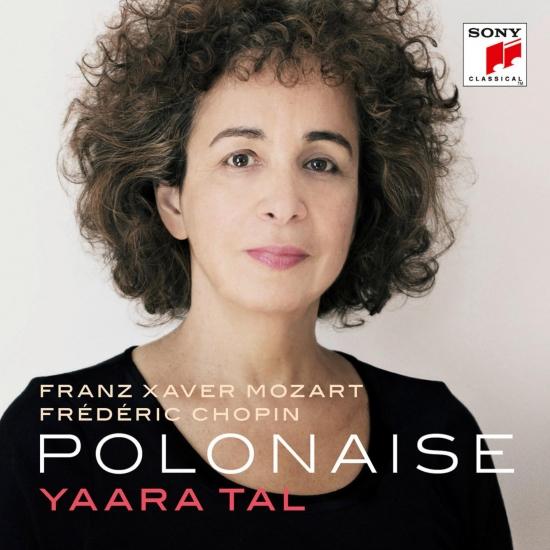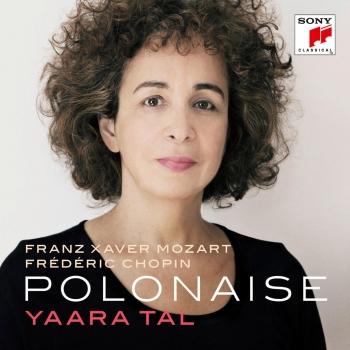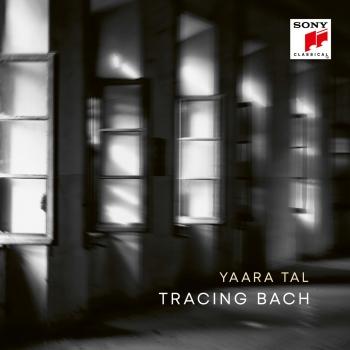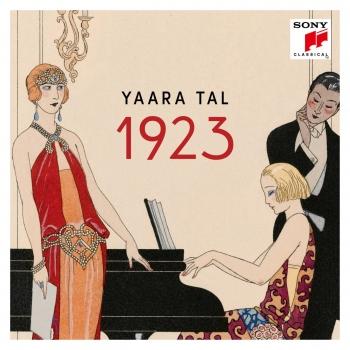
Polonaise Yaara Tal
Album info
Album-Release:
2017
HRA-Release:
04.08.2017
Album including Album cover Booklet (PDF)
I`m sorry!
Dear HIGHRESAUDIO Visitor,
due to territorial constraints and also different releases dates in each country you currently can`t purchase this album. We are updating our release dates twice a week. So, please feel free to check from time-to-time, if the album is available for your country.
We suggest, that you bookmark the album and use our Short List function.
Thank you for your understanding and patience.
Yours sincerely, HIGHRESAUDIO
- Franz Xaver Wolfgang Mozart (1791 - 1844): Six Polonaises mélancoliques, Op. 17:
- 1No. 1 in B Minor, Tempo giusto04:08
- 2No. 2 in E Minor, Andantino espressivo04:50
- 3No. 3 in E-Flat Major, Tempo di ballo03:05
- 4No. 4 in G Minor, Allegretto moderato04:38
- 5No. 5 in F Minor, Espressivo04:56
- 6No. 6 in D Minor04:34
- Quatre Polonaises mélancoliques, Op. 22:
- 7No. 1, Risoluto03:40
- 8No. 2, Andantino con moto04:33
- 9No. 3, Allegretto moderato05:00
- 10No. 4, Andante espressivo06:34
- Frédéric Chopin (1810 - 1849):
- 11Polonaise in A-Flat Major, B.5 (KK IVa, No. 2 )05:05
- 12Polonaise in B-flat minor, B.13 (KK IVa, No. 5)05:13
- 13Polonaise in G-Flat Major, KK IVa, No. 808:24
Info for Polonaise
After her widely acclaimed first Haydn recording, the Israeli pianist Yaara Tal, known as one half of the unique international piano duo Tal & Groethuysen, is now presenting her second solo album.
The dance theme of her new album, Polonaise, is reflected in the dance-like works of the Austrian composer, piano virtuoso, and son of Wolfgang Amadeus Mozart, Franz Xaver Mozart (1791–1844) and his famous Polish contemporary Frédéric Chopin.
Originally a Polish national dance danced both in rural settings as well as at court, in the 18th century the polonaise increasingly established itself in the courts of Europe’s nobility, and reached its high point in, among others, the famous polonaises of Frédéric Chopin. For her new album Yaara Tal chose three rarely recorded early works of the composer: the Polonaise in A-flat major KK IVa No. 2 (1821), B-flat minor KK IVa No. 5 (1826), and G-flat major KK IVa No. 8 (1829) and combined them with polonaises by Franz Xaver Mozart: the 6 Polonaises mélancoliques op. 17 and 4 Polonaises mélancoliques op. 22.
About the project: In a cruel twist of fate, Mozart’s son was born only four months before the death of his father. Although he was granted no time to get to know him, his destiny remained inextricably entwined with his famous father to the end of his days. His mother Constanze adopted the strategy of showcasing his existence in public, thereby turning him into an article from the “Mozart brand” that she knew only too well how to market. Though delicate and fragile by nature, the boy was assigned the role of the brilliant and successful heir: it was his mission in life to become as glorious as his father. That he was able to sustain a musical career at all, despite this enormous pressure, is perhaps the most incontrovertible sign of his remarkable gifts as a pianist and composer.
His move to Galicia at the age of 17 might have been a liberating blow, a breakthrough to his own identity. Indeed, it almost succeeded in being just that! The polonaises he wrote between 1811 and 1818 shed illuminating light on this promise. If his many sets of piano variations point to an idiosyncratic virtuosity in the use of the keyboard and the hands, his polonaises reveal an urge and longing for a new expressive universe unmoored in the classical tradition. But the direction this mental path might have taken, and how far it might have gone, remain matters of speculation, for the spirit of the age was not ready for it.
Yet it is precisely this suspension in stylistic uncertainty, this commitment to a new frame of reference, that lends these pieces their distinctive flavour. And as paradoxical as it might seem, the expression of such vague sensibilities gained in focus and audacity as he proceeded to compose his polonaises. Especially characteristic are their myriad expression marks regarding dynamics and tempo. Here Franz Xaver could hold his own with Mahler and Reger! Sometimes his instructions to the player are flatly contradictory and point in opposite directions within the narrowest of confines. In this respect he clearly parted ways with his father, who, as we all know, was extremely wary of such suggestions. On the other hand Franz Xaver resembles his father when it comes to the perfect forming of harmony at the keyboard, to the placement of notes, to consummate balance and contrapuntal workmanship – features characteristic of father and son alike.
Fate was also cruel in allowing Franz Xaver to fall in love with a woman who returned his affection but was unattainable. This relation remained intact until his death. Homelessness became an integral part of the emotional life that he was forced to endure: first as the shadow of an overpowering father, then as the son of an ambitious mother with a tendency toward simple-mindedness, and finally the need to share the woman of his life with another man. That his life took on a deep tinge of melancholy, and his vitality declined with advancing age, is as sad as it is comprehensible.
From today’s vantage point, we can assign the music of Franz Xaver Mozart to the place it merits in history: no one before him had so effectively set to music the idiosyncratic attitude towards life expressed in his polonaises, and many of the intermingled turns of phrase, gestures, lines and rhythmic motifs in the polonaises later found their way into what we call romanticism.
It is entirely possible, if unproven, that the young Chopin was aware of Franz Xaver Mozart’s cycles. After all, he wrote nothing but polonaises during his childhood, and his piano teacher, the Bohemian musician Vojtěch Živný, was familiar with every musical innovation from the Danube Monarchy. Nor can it even be dismissed that Chopin heard Mozart play the piano in Warsaw as a child! That the nocturnes of John Field (1782–1837) were of seminal importance to Chopin’s music is unquestioned and well documented. Is it more than a quirk of fate that Field had the same birthday (26 July) as Franz Xaver Mozart, who may well have been Chopin’s guide on the path to the polonaise?
Yaara Tal, piano
Recorded 17. - 19. 12 2016 at Studio 2 des Bayerischen Rundfunks München, Germany
Engineered by Marcus Huber
Produced by Falk Häfner (BR) Michael Brüggemann (SONY)

Yaara Tal & Andreas Groethuysen
The Israeli pianist Yaara Tal and her German partner Andreas Groethuysen are one of the world ́s leading piano duos of our time.
Besides an unsurpassed homogenity and spontanity in their playing, the duo displays great creativity which feature unjustly neglected musical treasures in addition to the standard repertoire.
The exclusive cooperation with the record company SONY CLASSICAL makes up an important part of their international success: The Duo Tal & Groethuysen has released about 40 CDs of piano music for two pianists whereas many of them are world première recordings e.g. of pieces by Carl Czerny, Reinhard Febel, Theodore Gouvy, Charles Koechlin, Richard Wagner etc, which have brought them great acclaim from critics and the public alike.
Their CDs have won the coveted “Preis der Deutschen Schallplattenkritik” ten times, while the German Phono Academy has awarded its “Echo Klassik”-Prize to five of their recordings, including the complete recordings of Schubert ́s music for four hands and the complete Mozart piano duos. Other awards from outside Germany, such as the “Cannes Classical Award“,“Editor's Choice“ by Gramophone and the “Supersonic Award“ reflect their high international reputation.
The latest recording "COLORS" (Sony Classical) including orchesteral works by Debussy and Strauss in transcriptions for two pianos will be released in Summer 2017.














